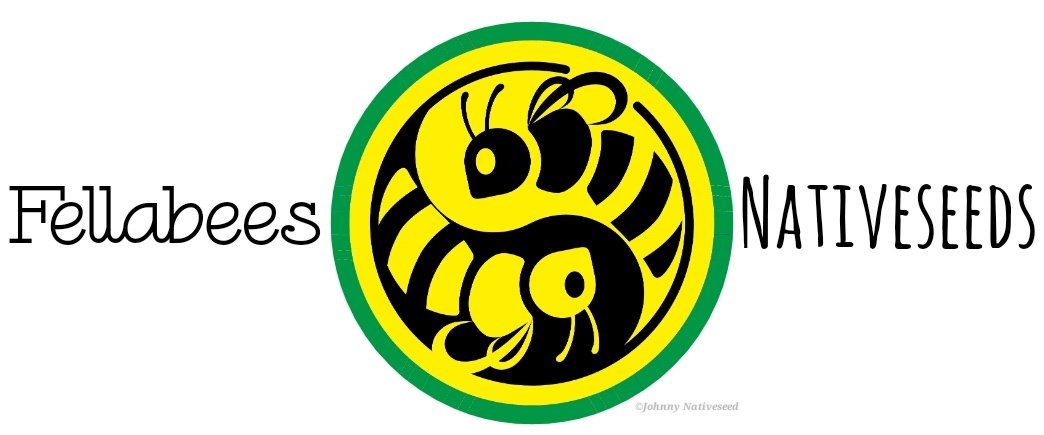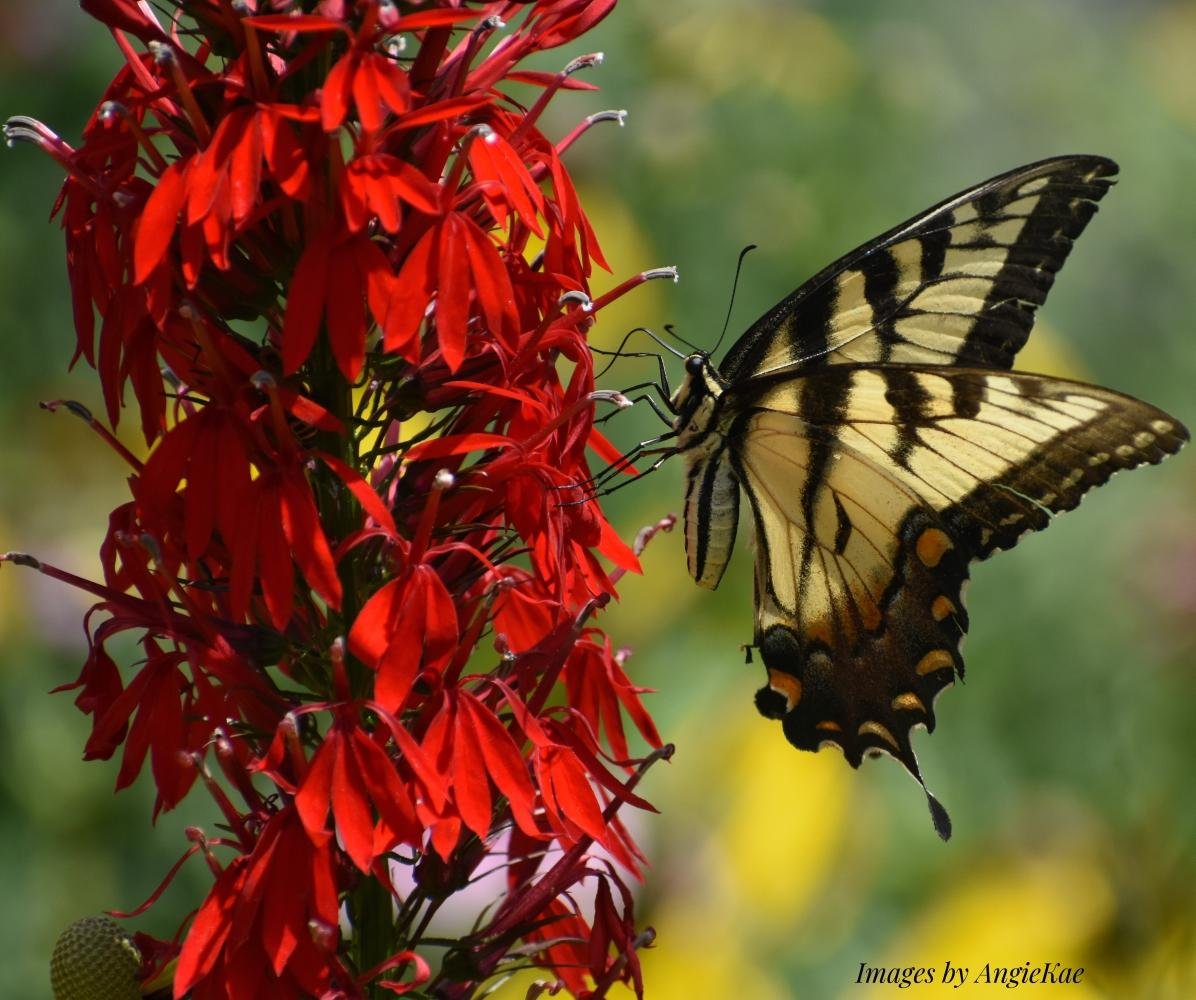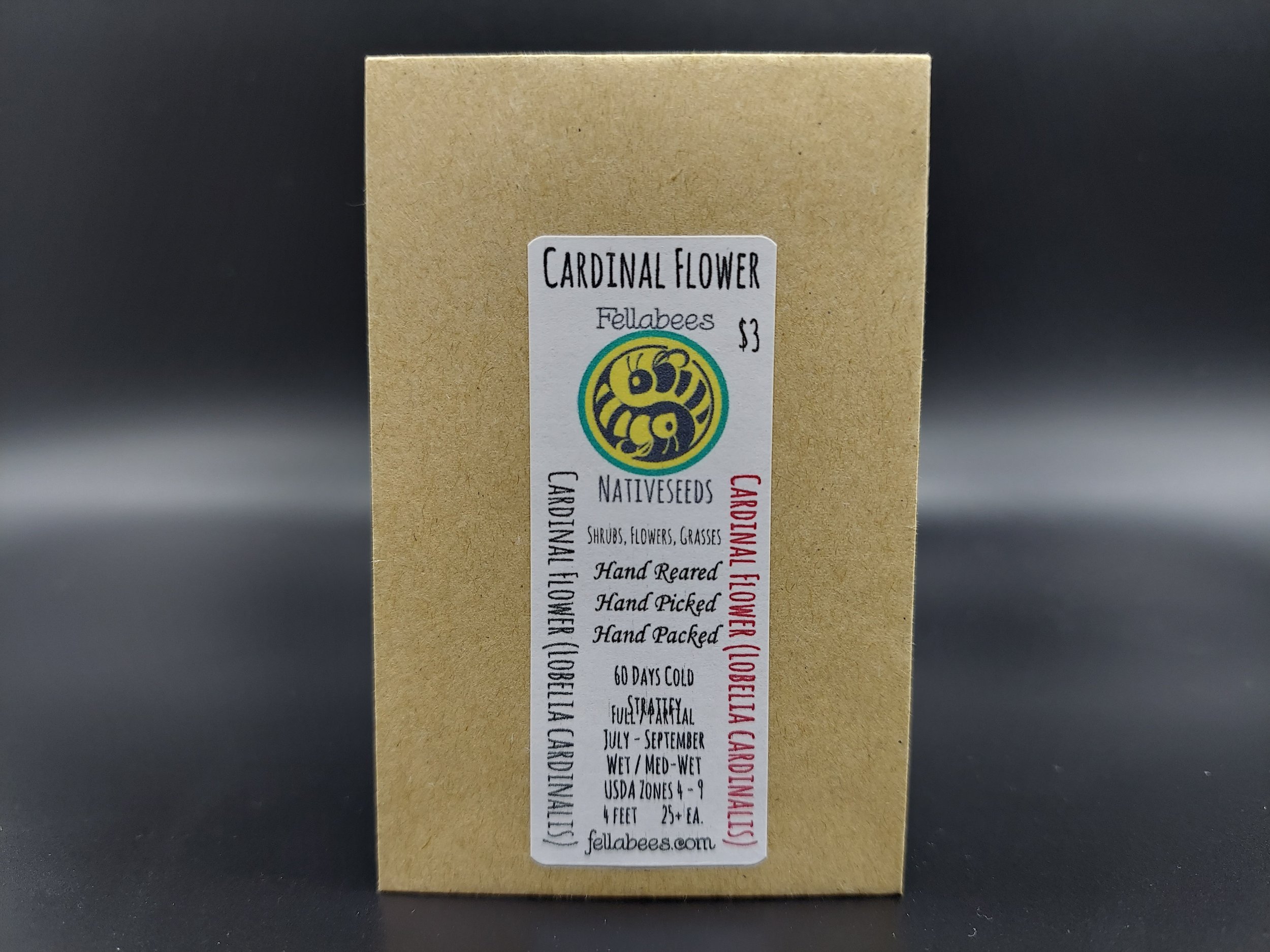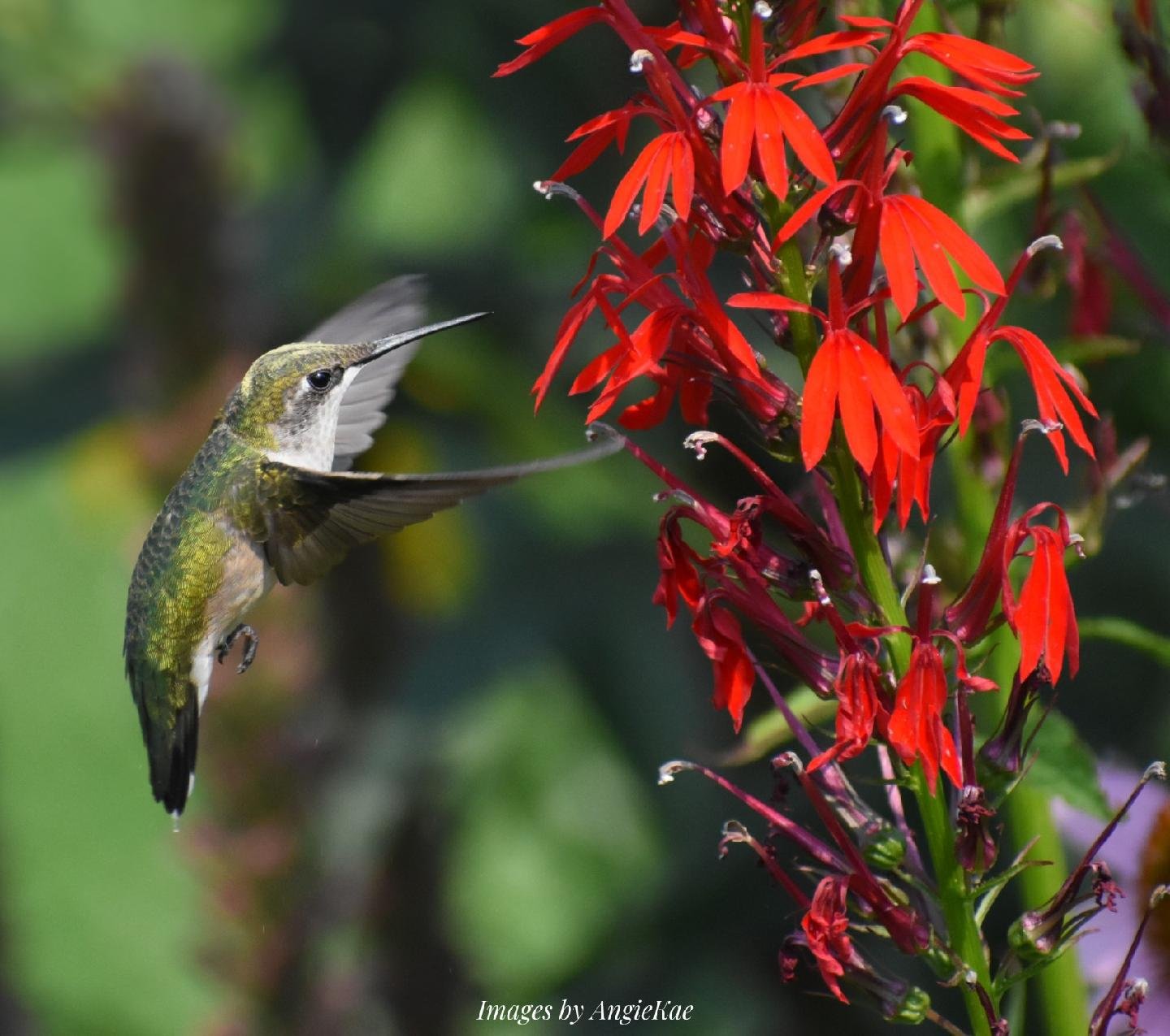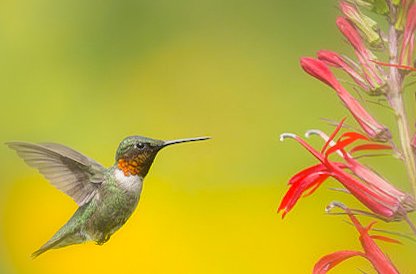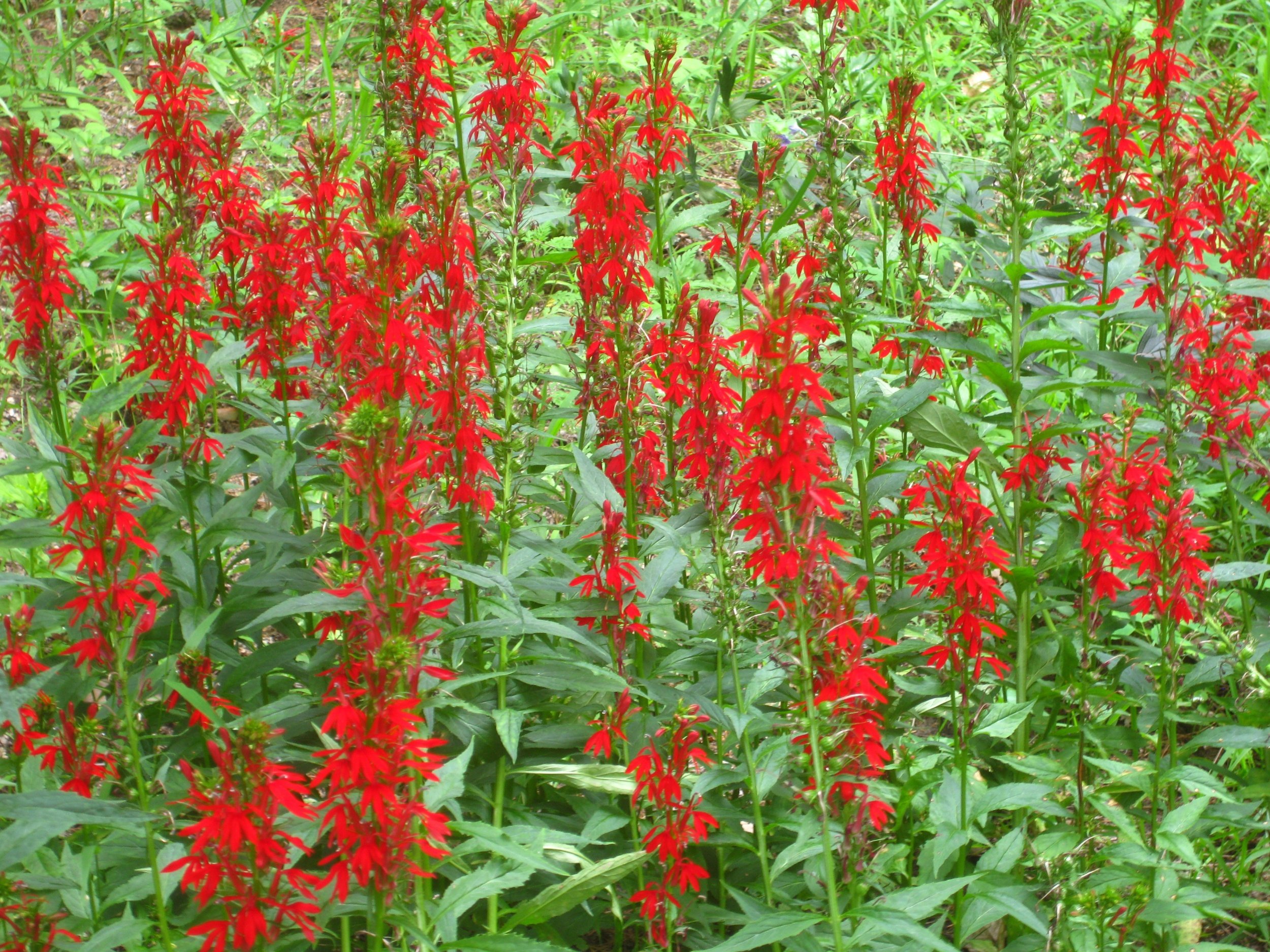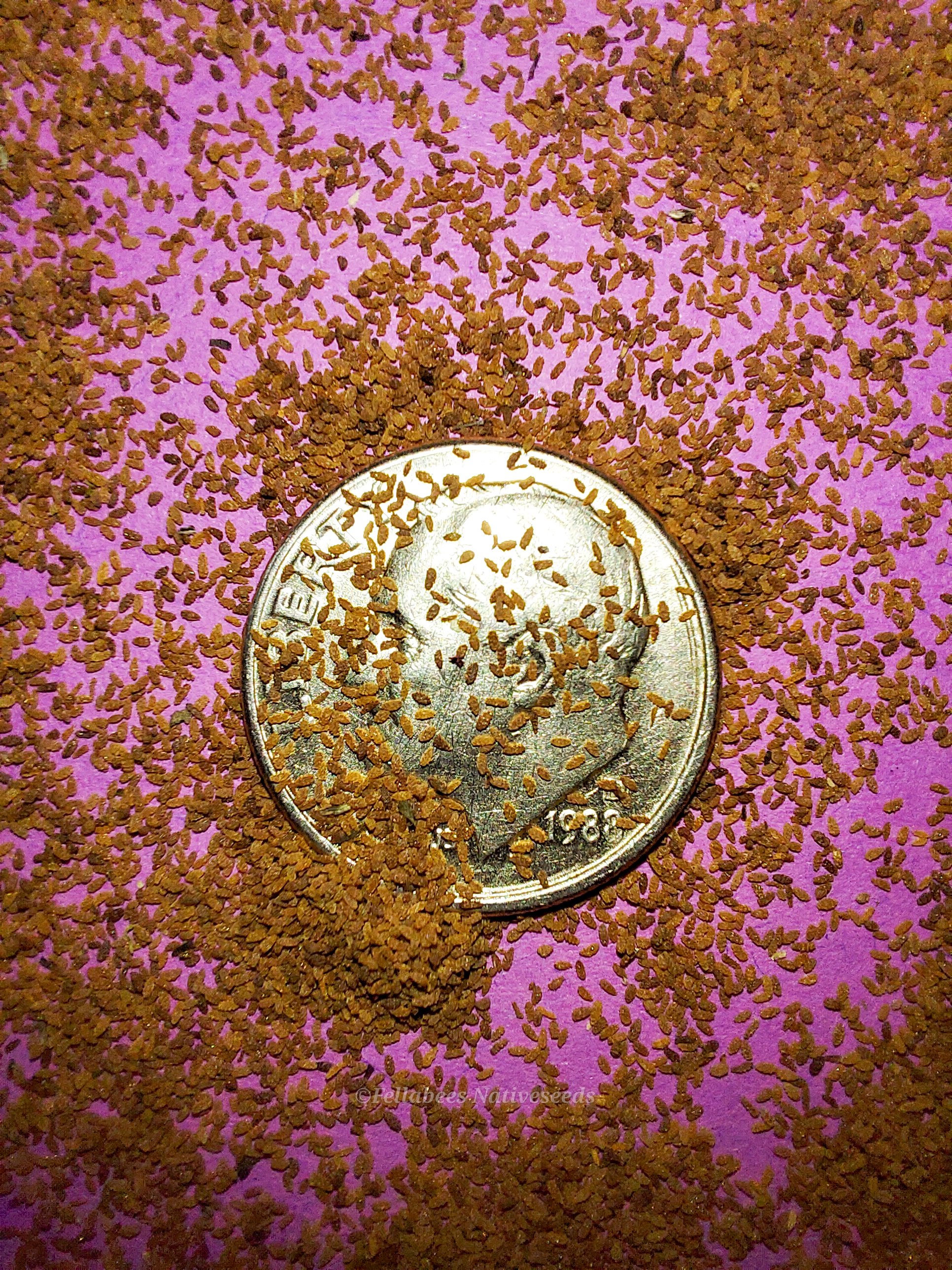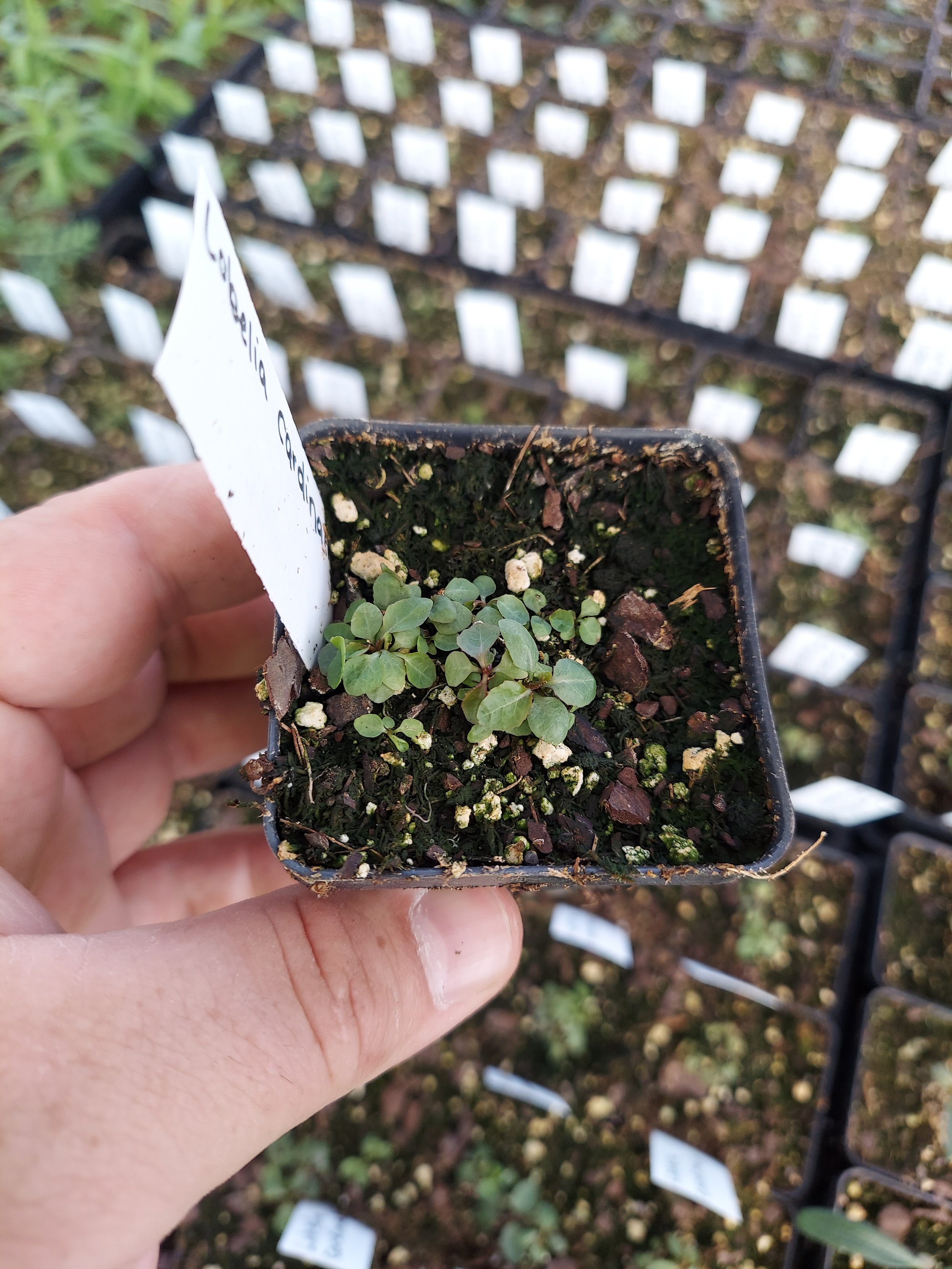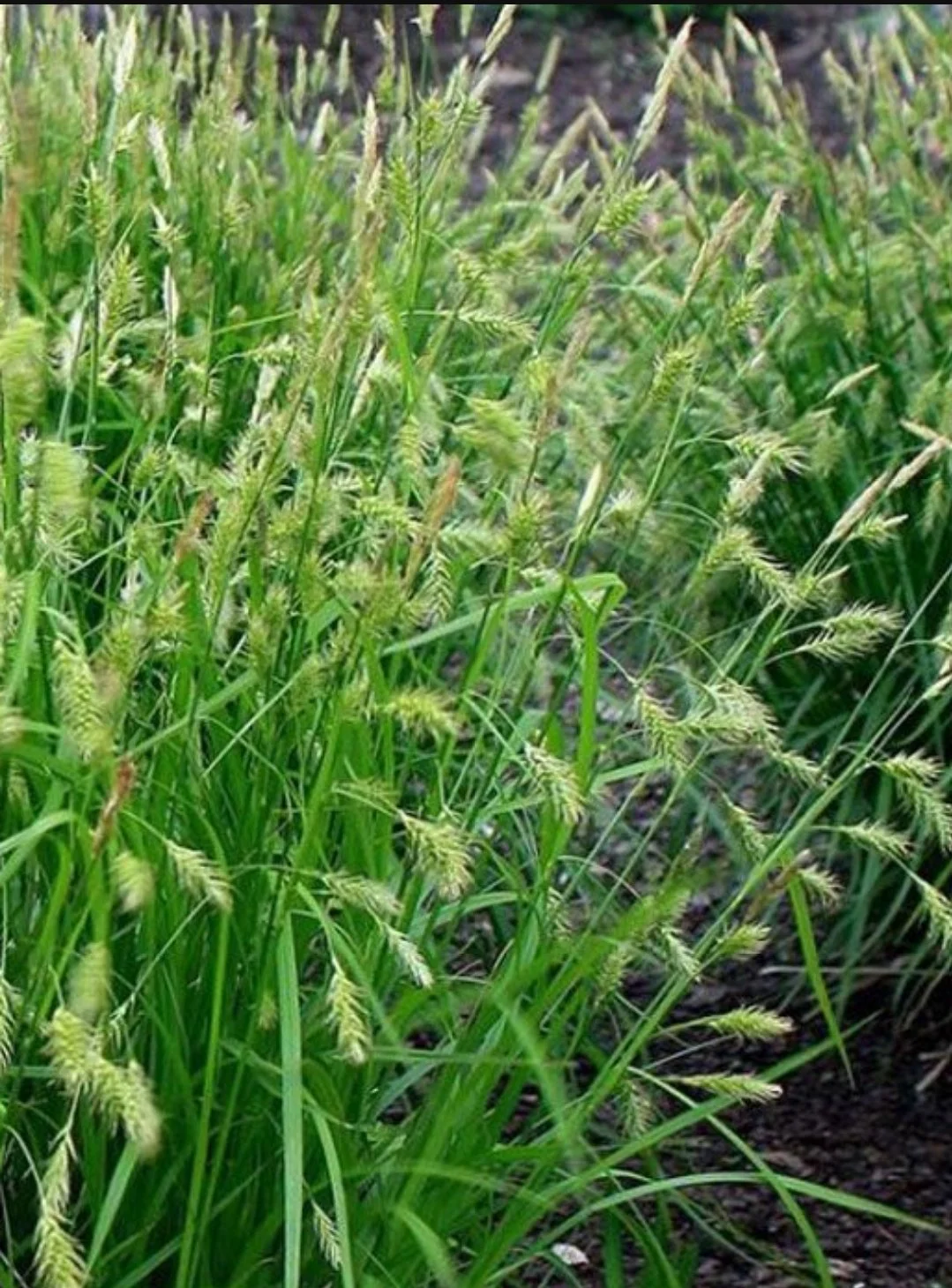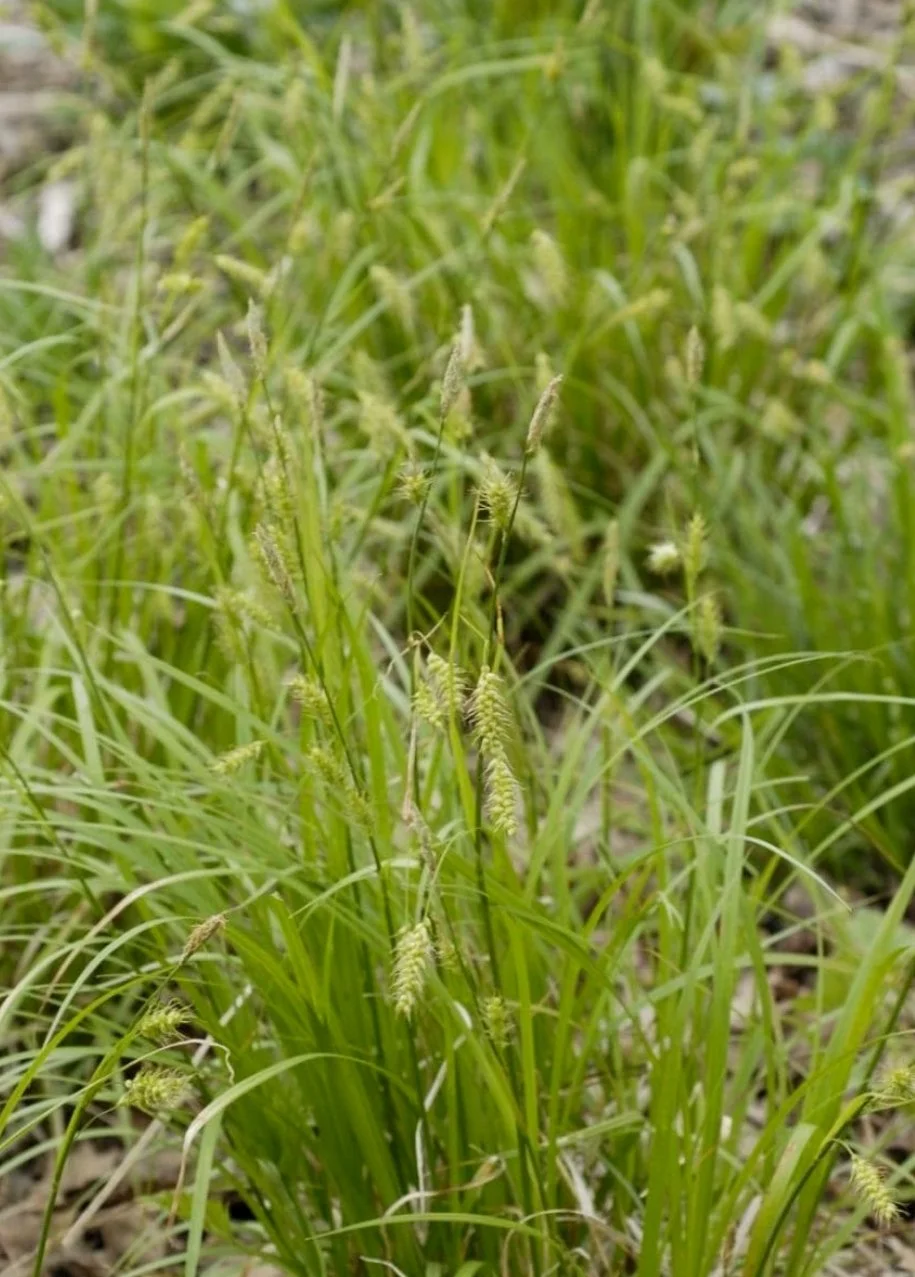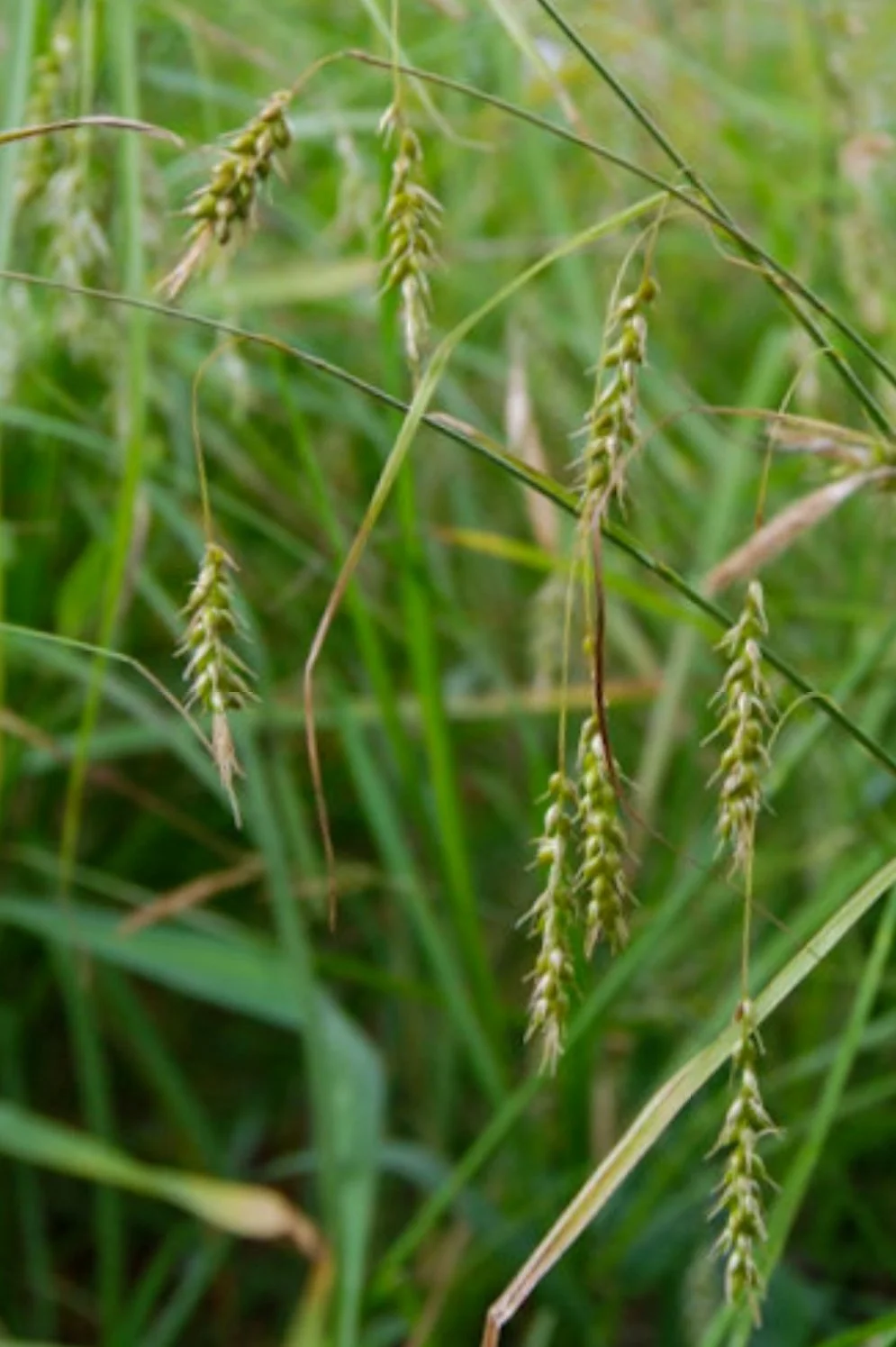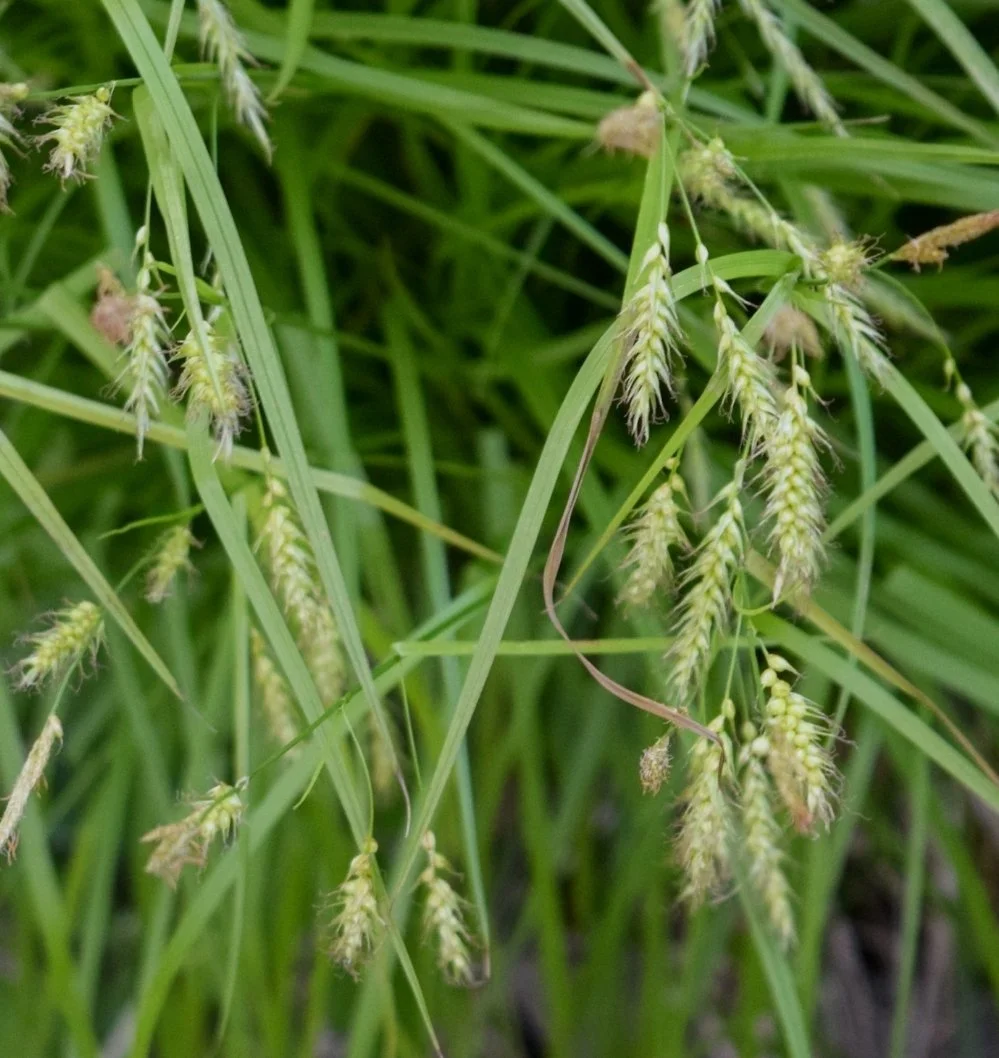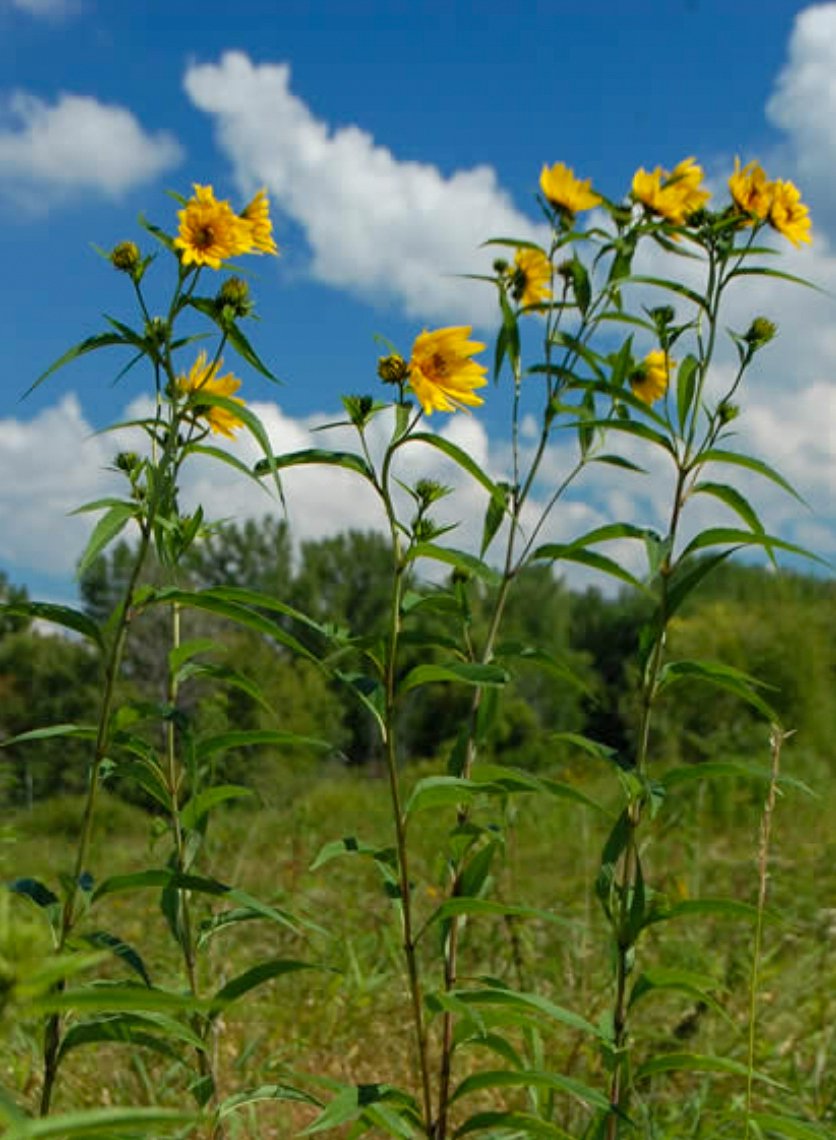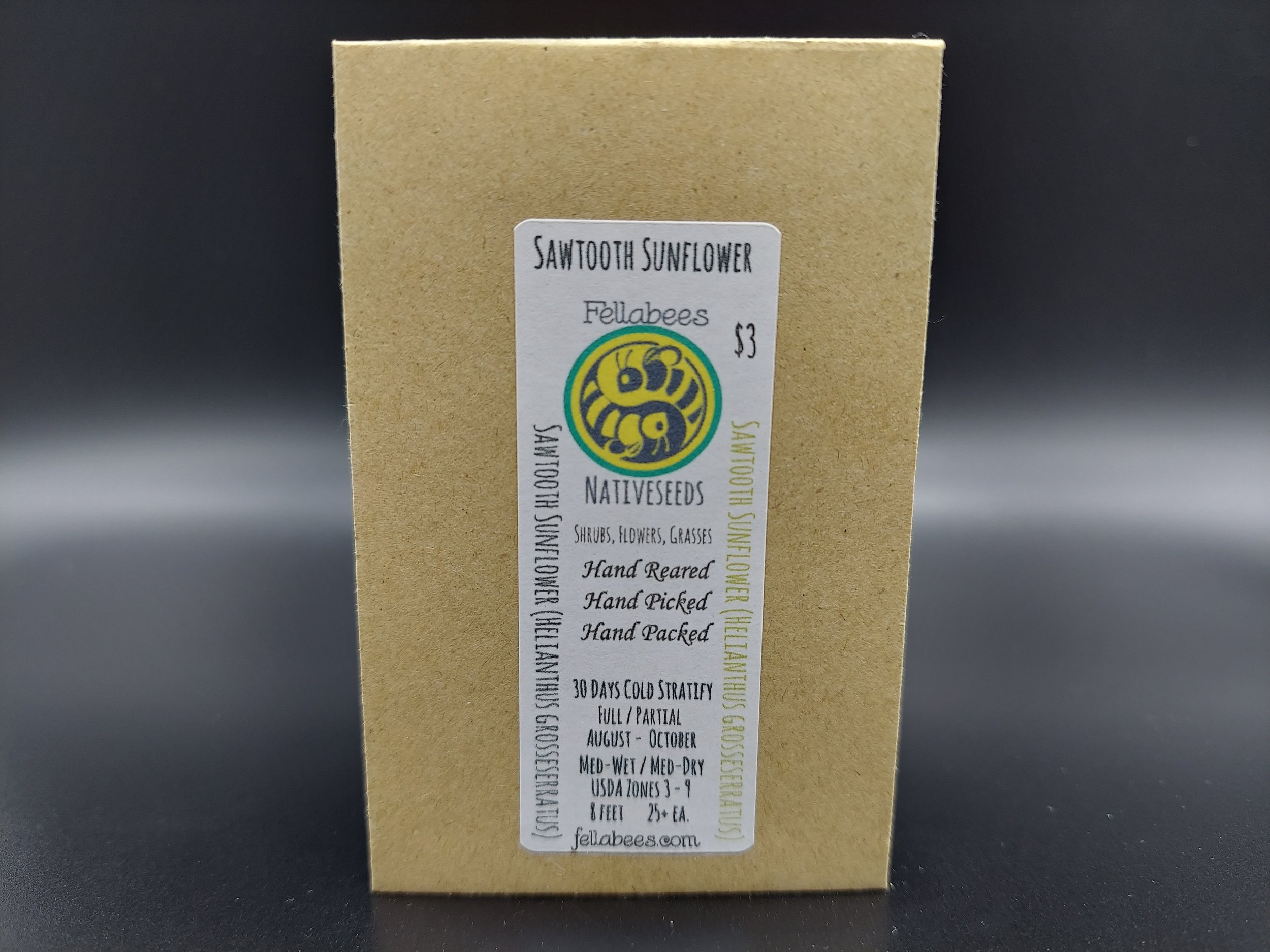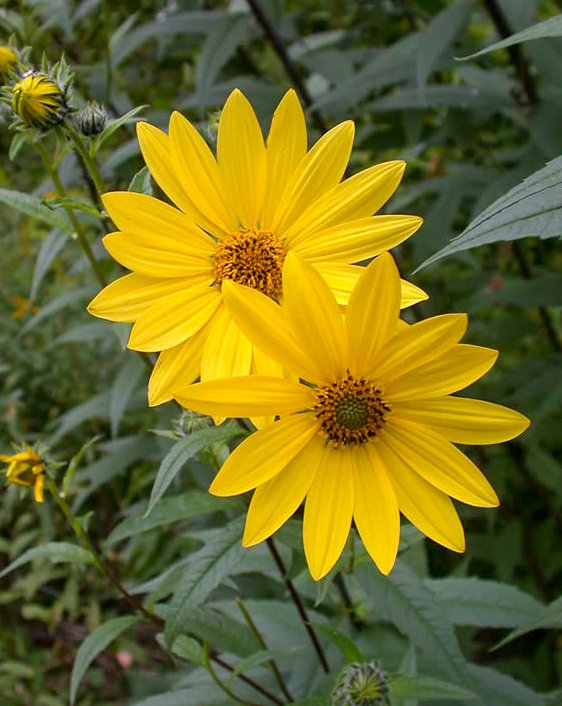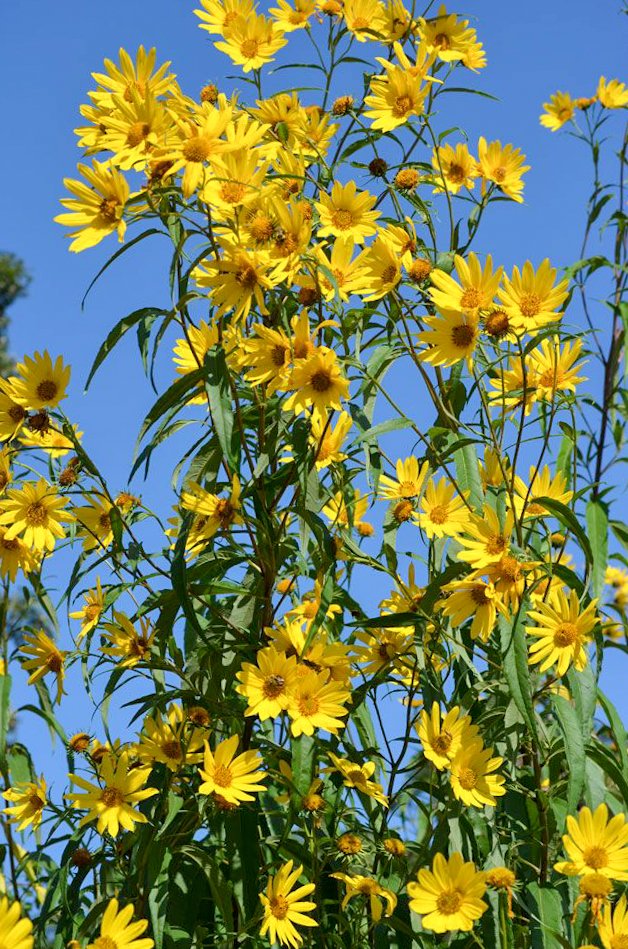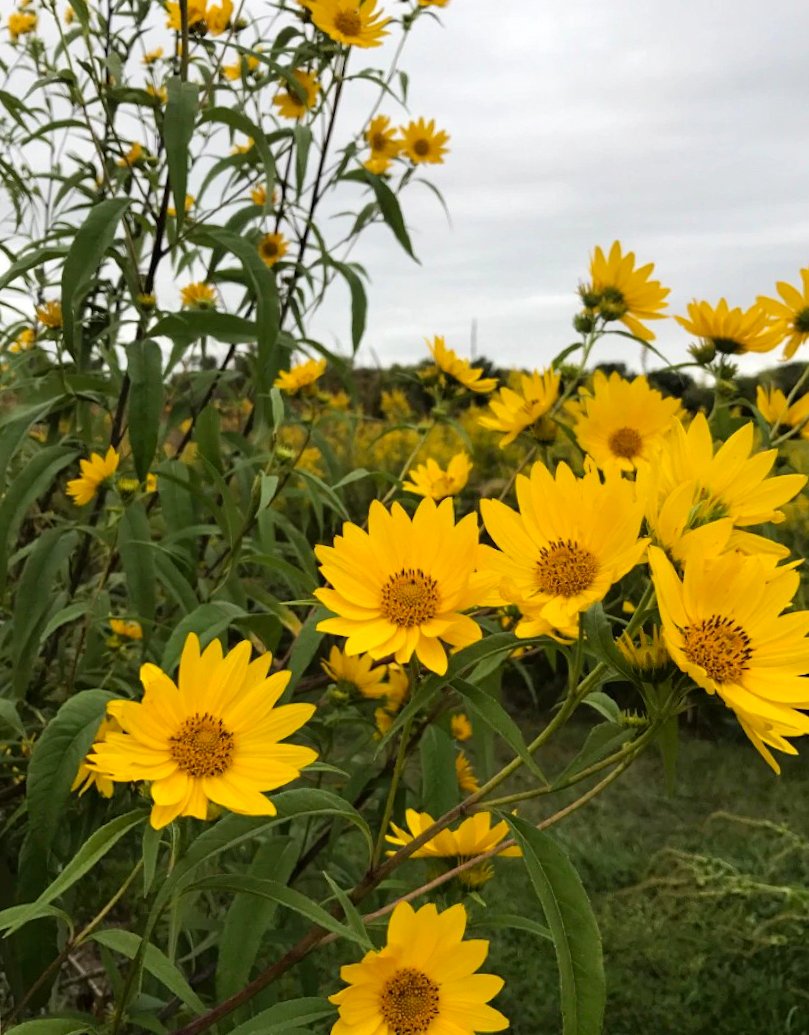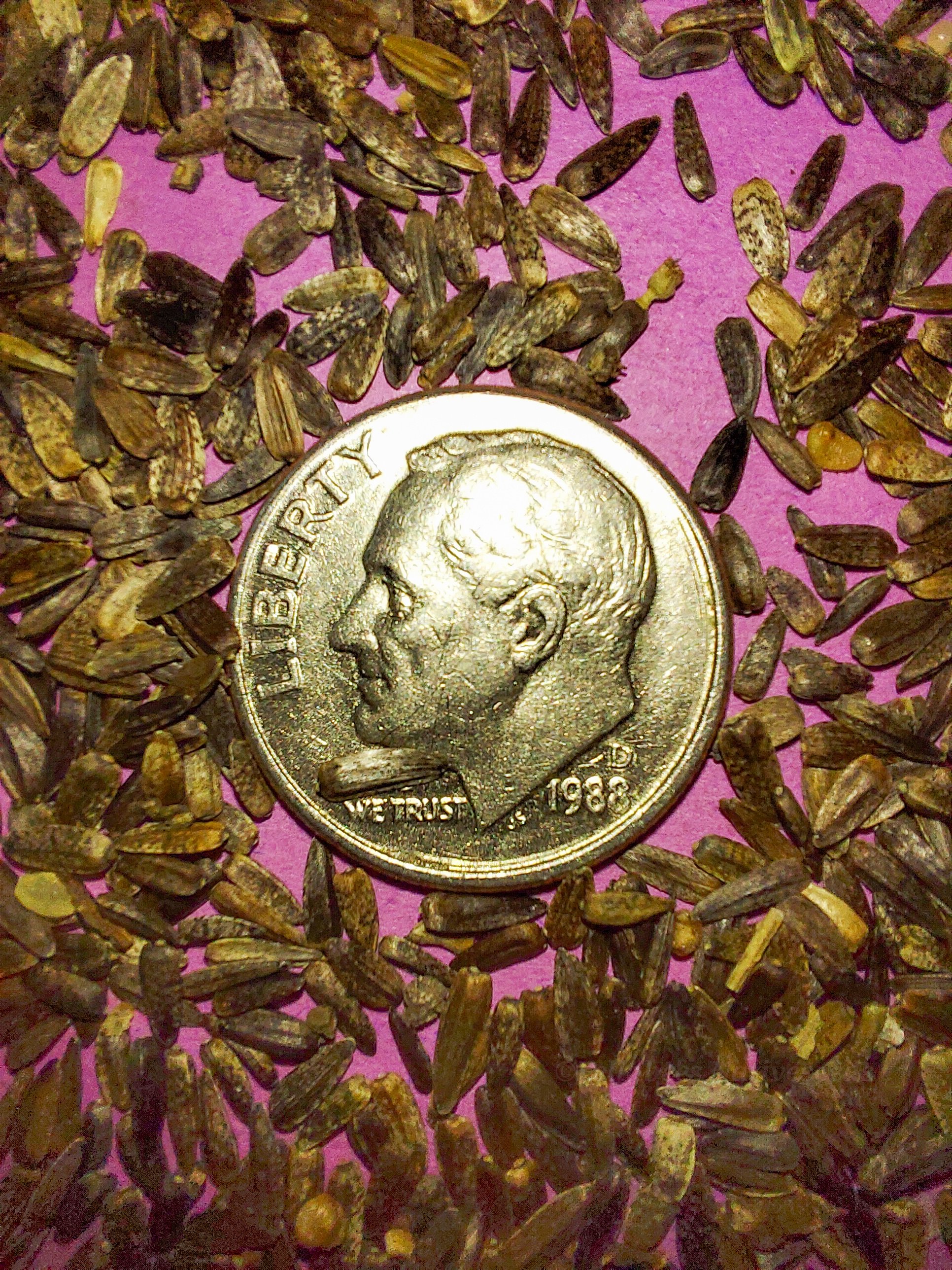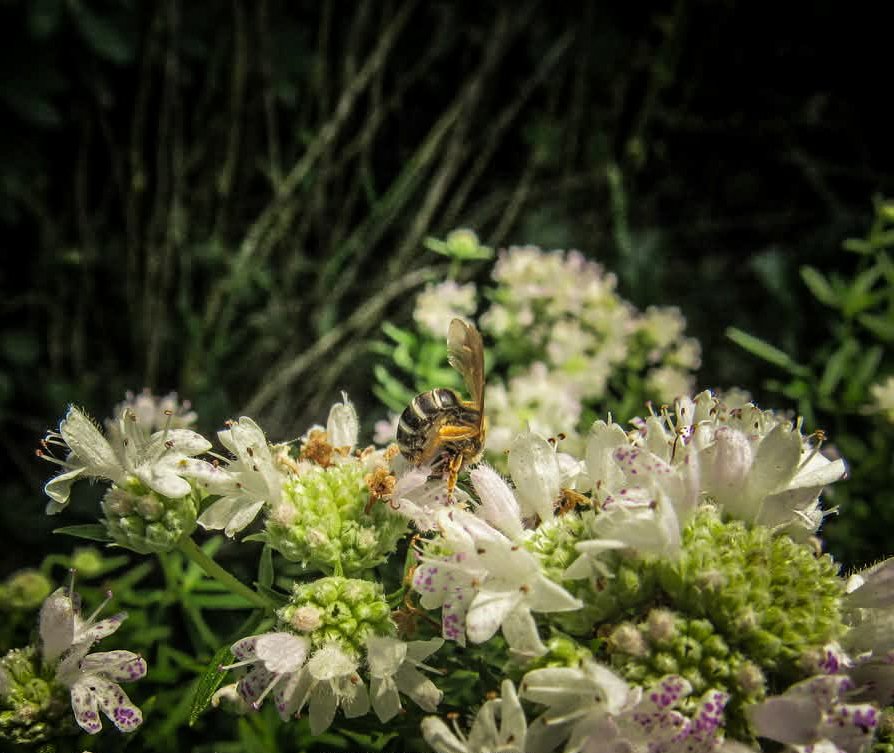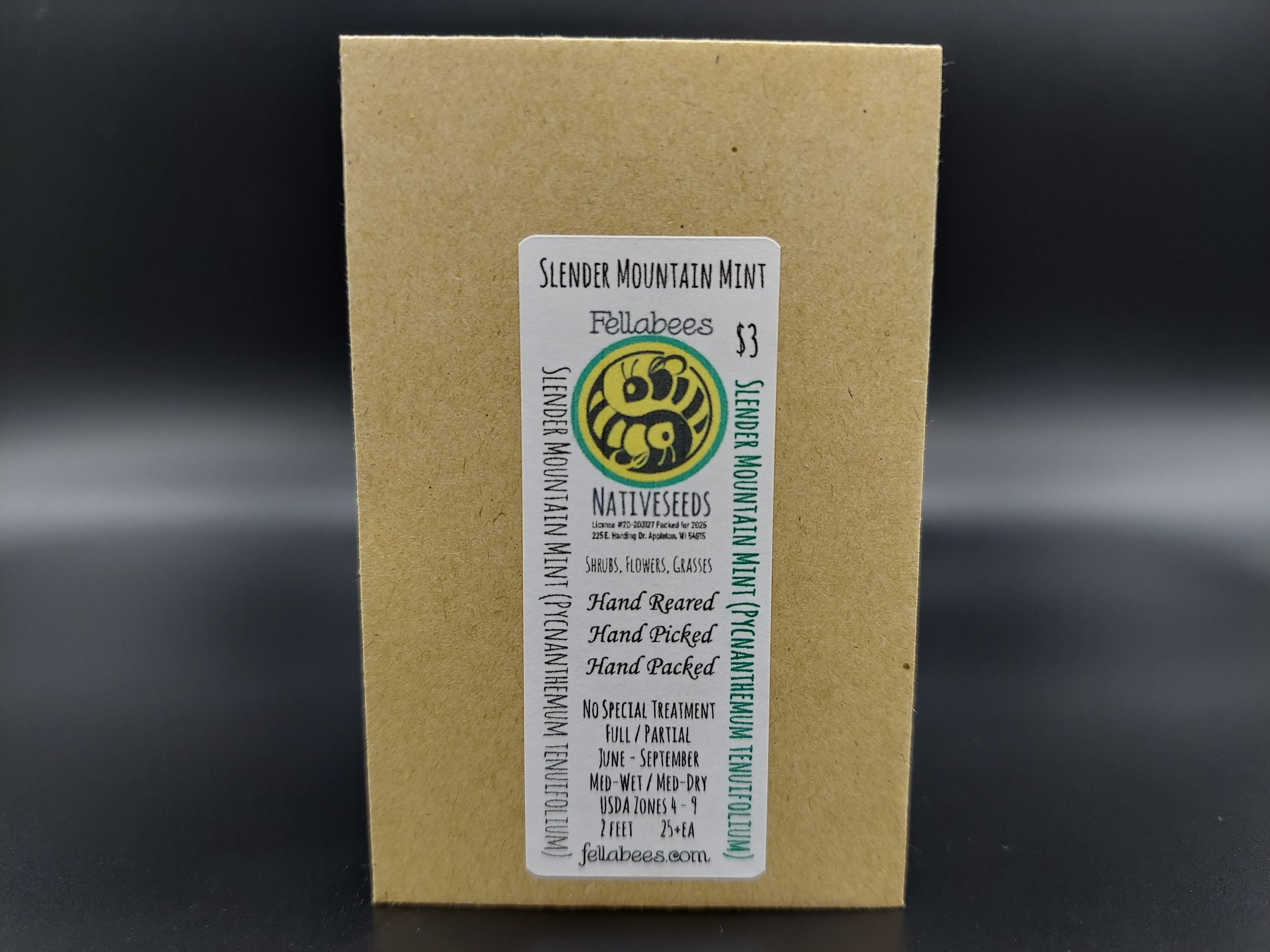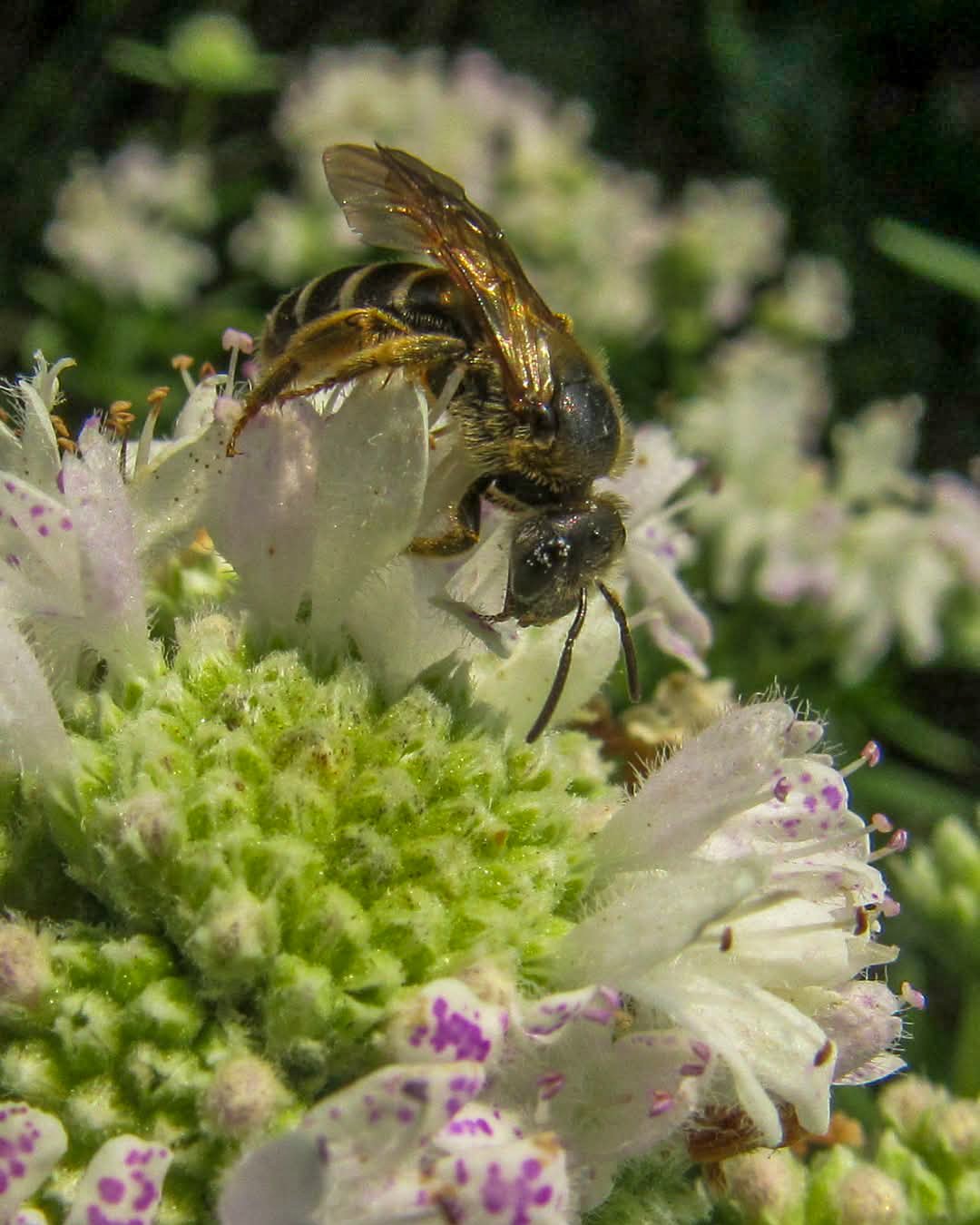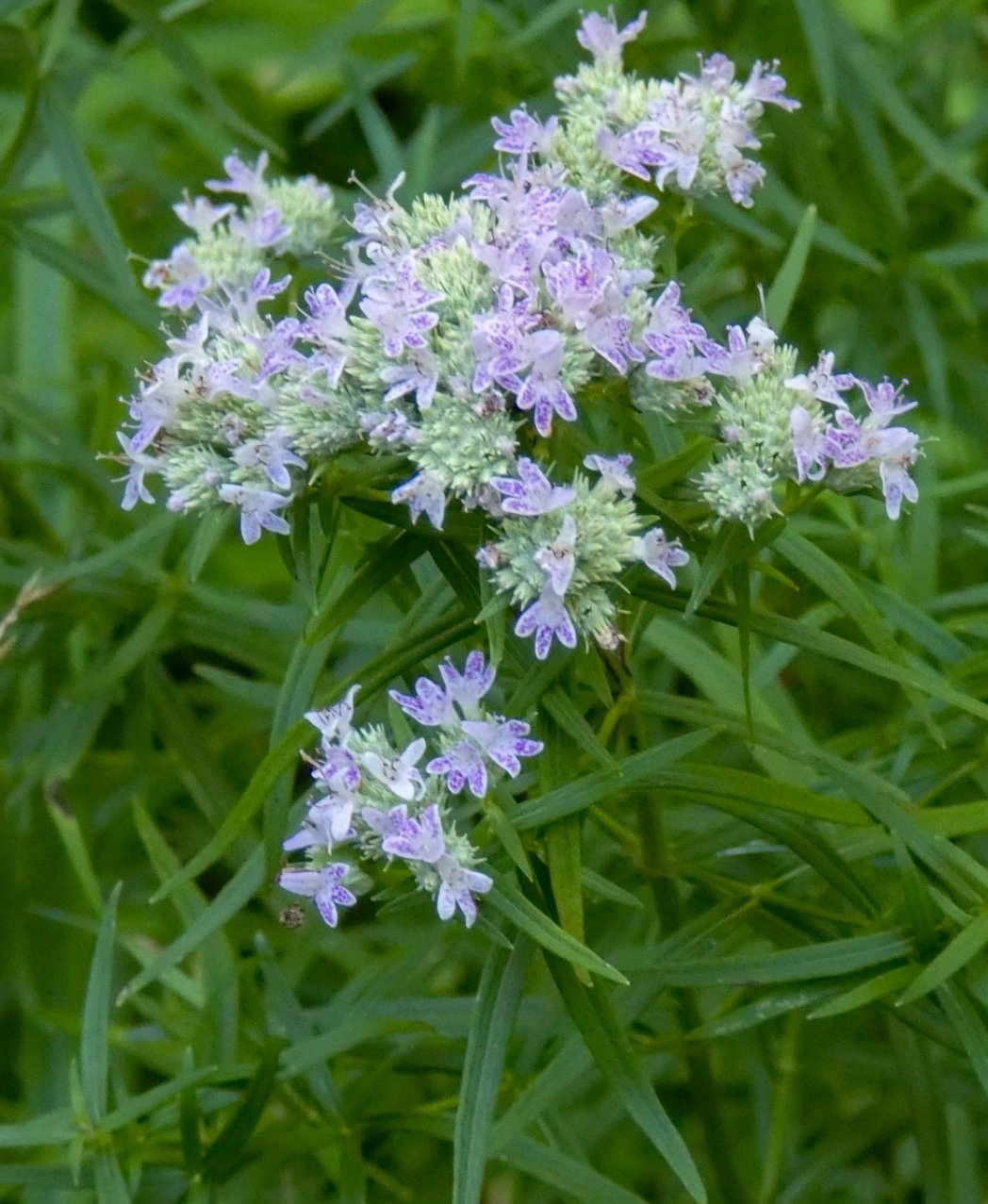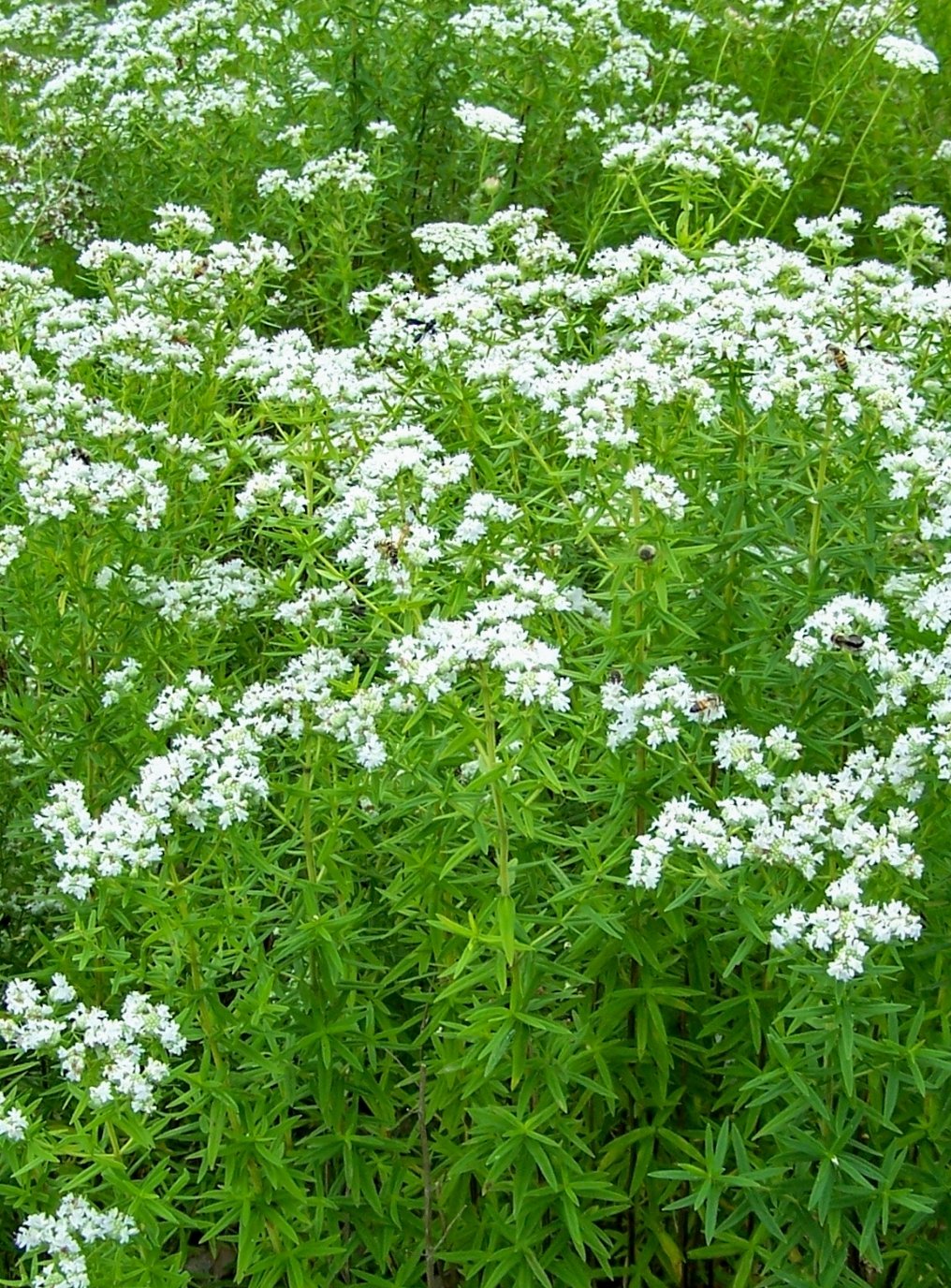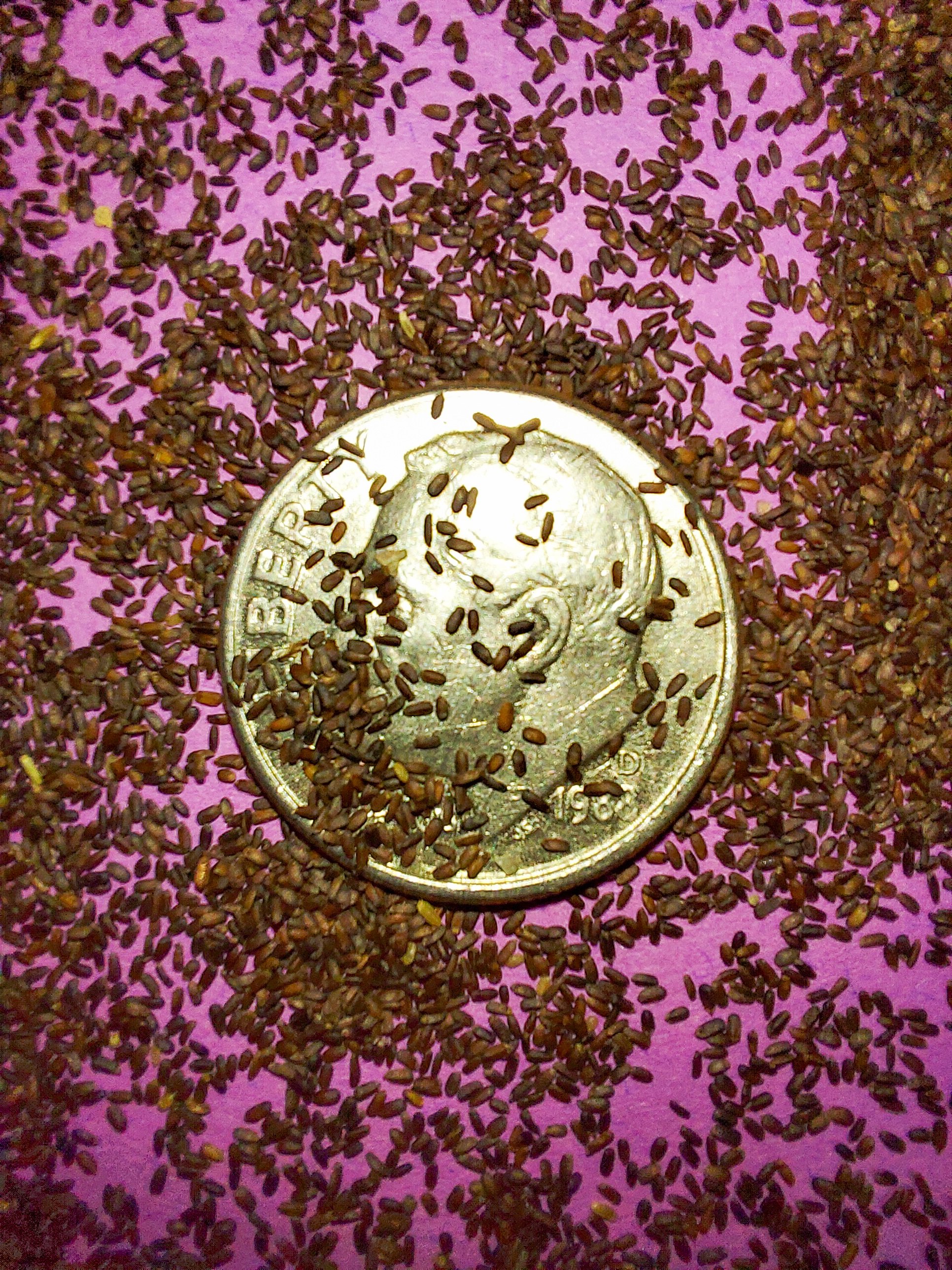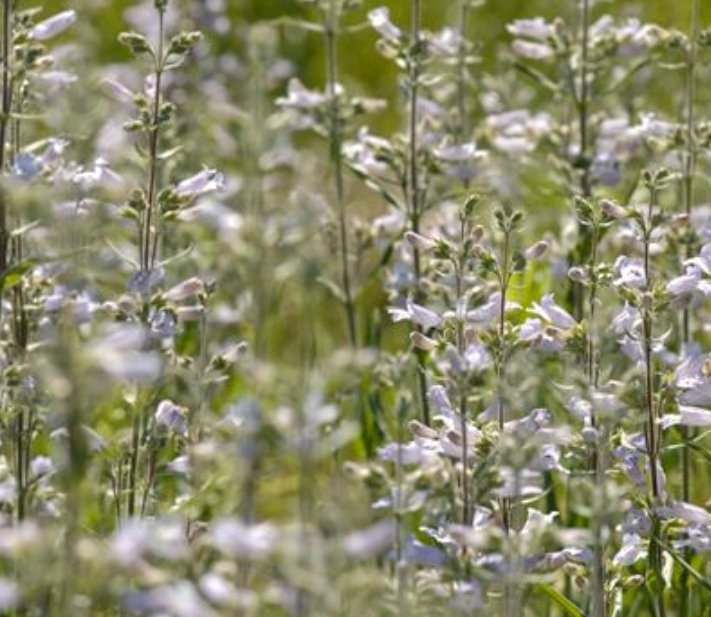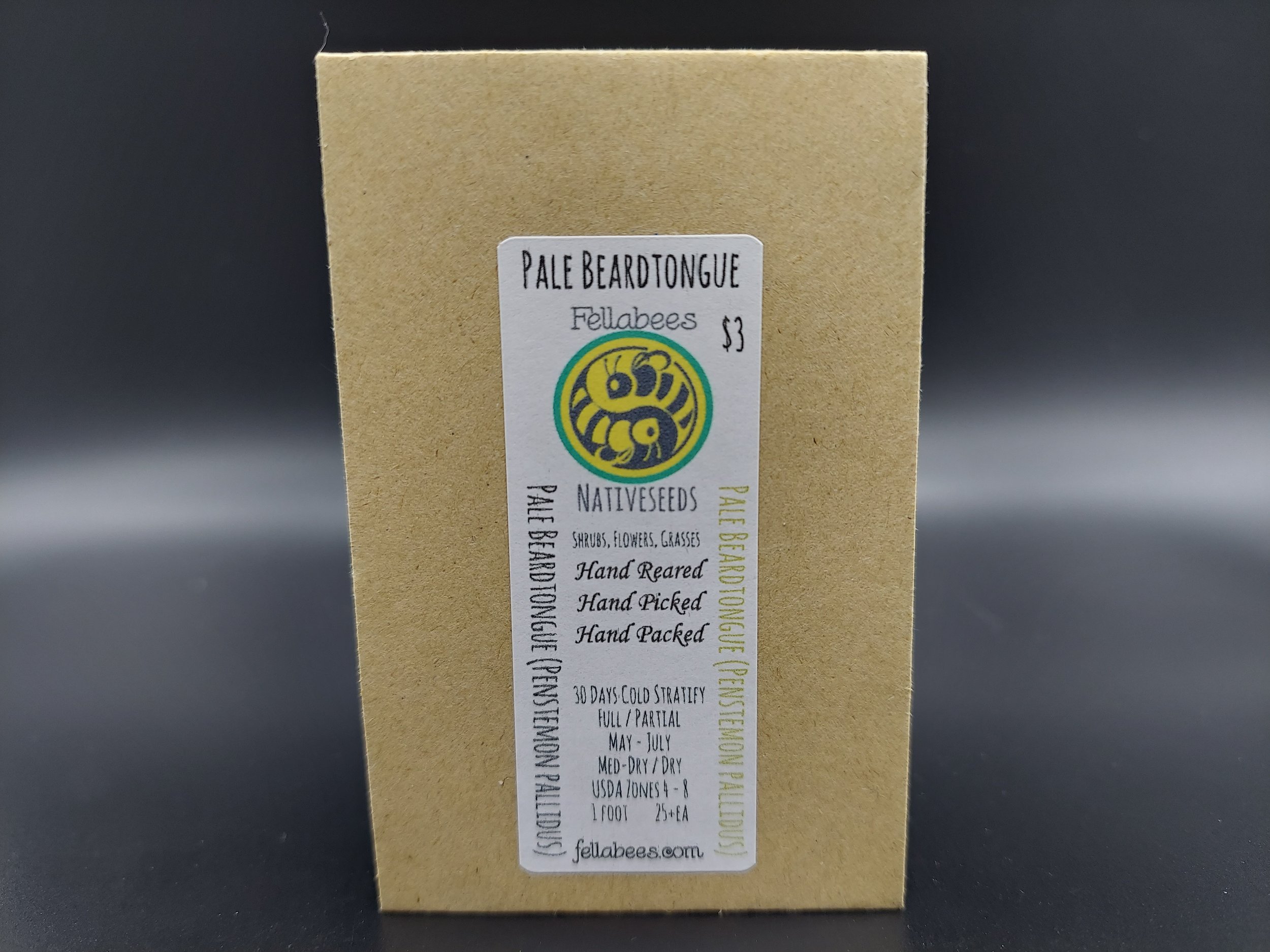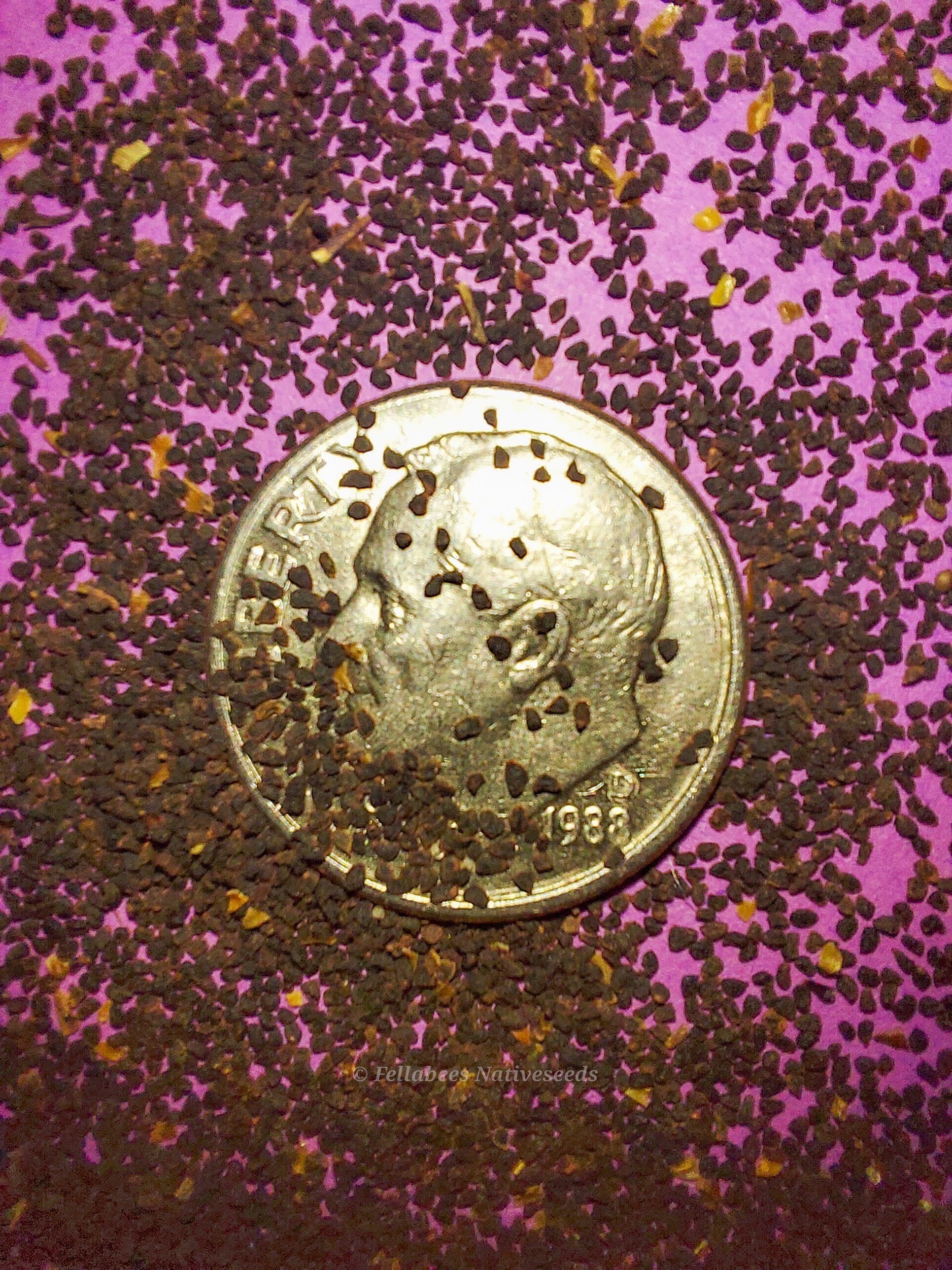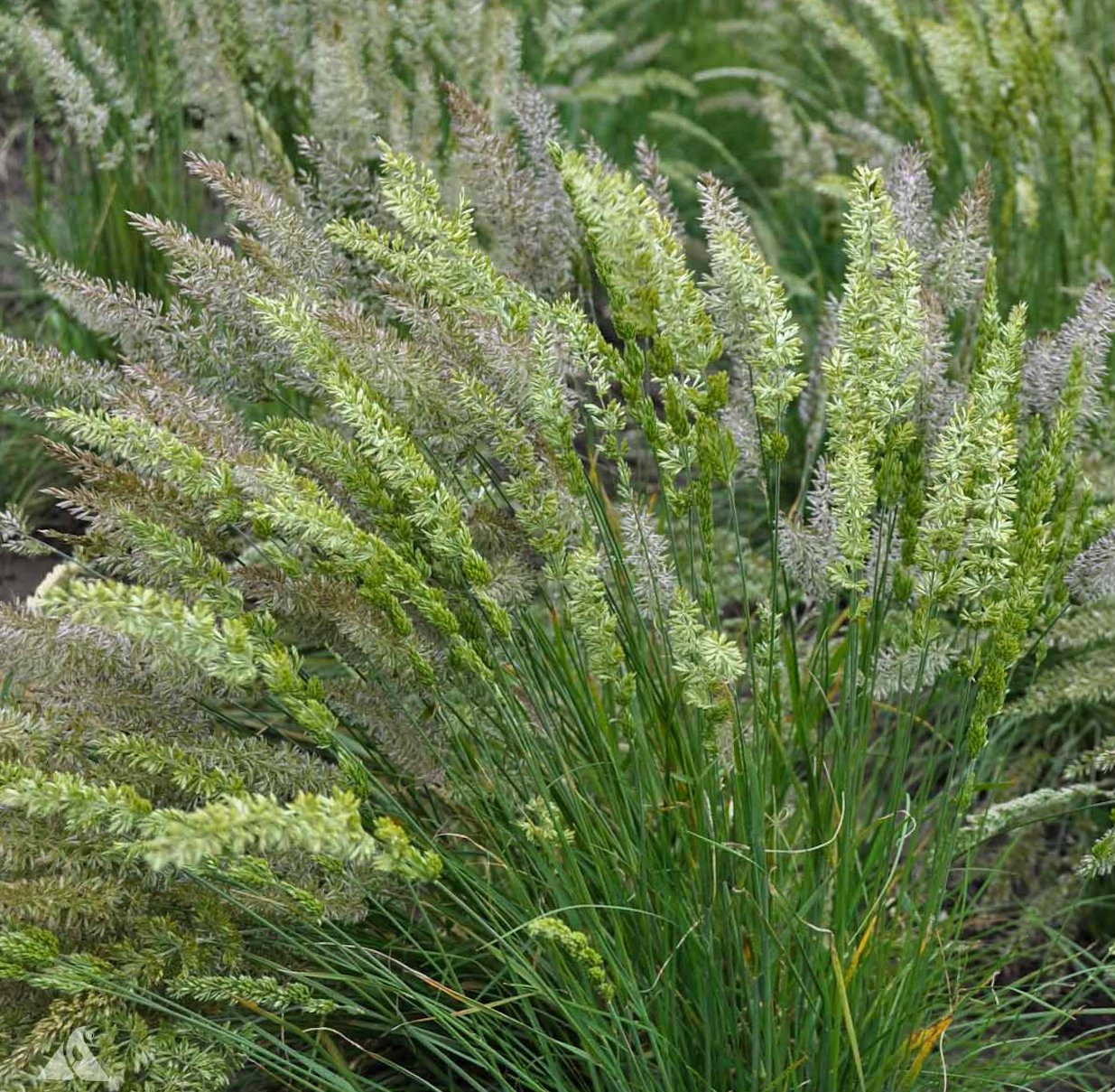 Image 1 of 5
Image 1 of 5

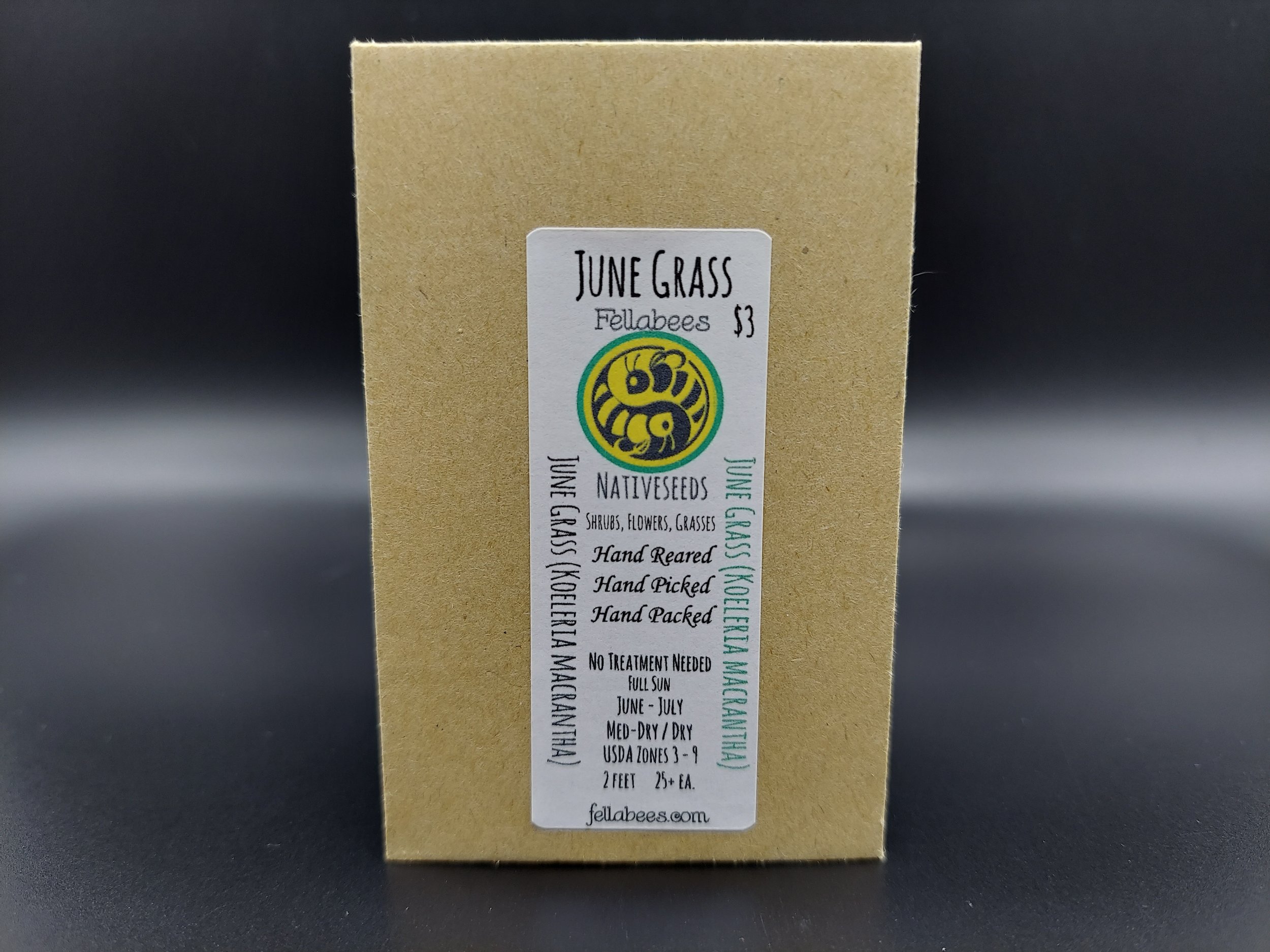 Image 2 of 5
Image 2 of 5

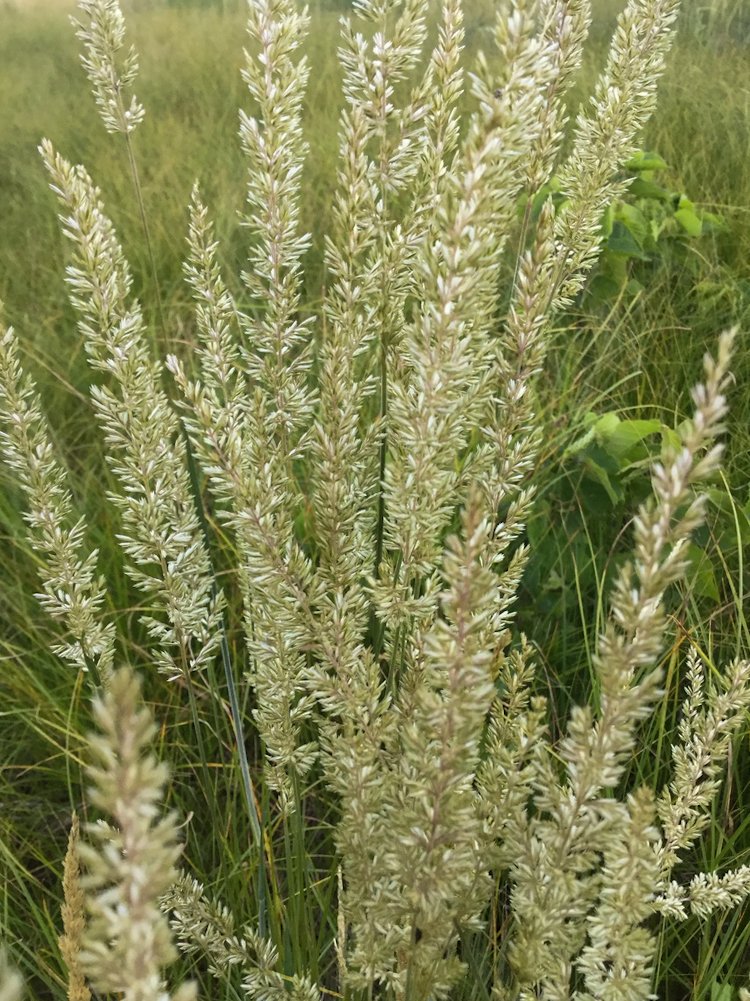 Image 3 of 5
Image 3 of 5

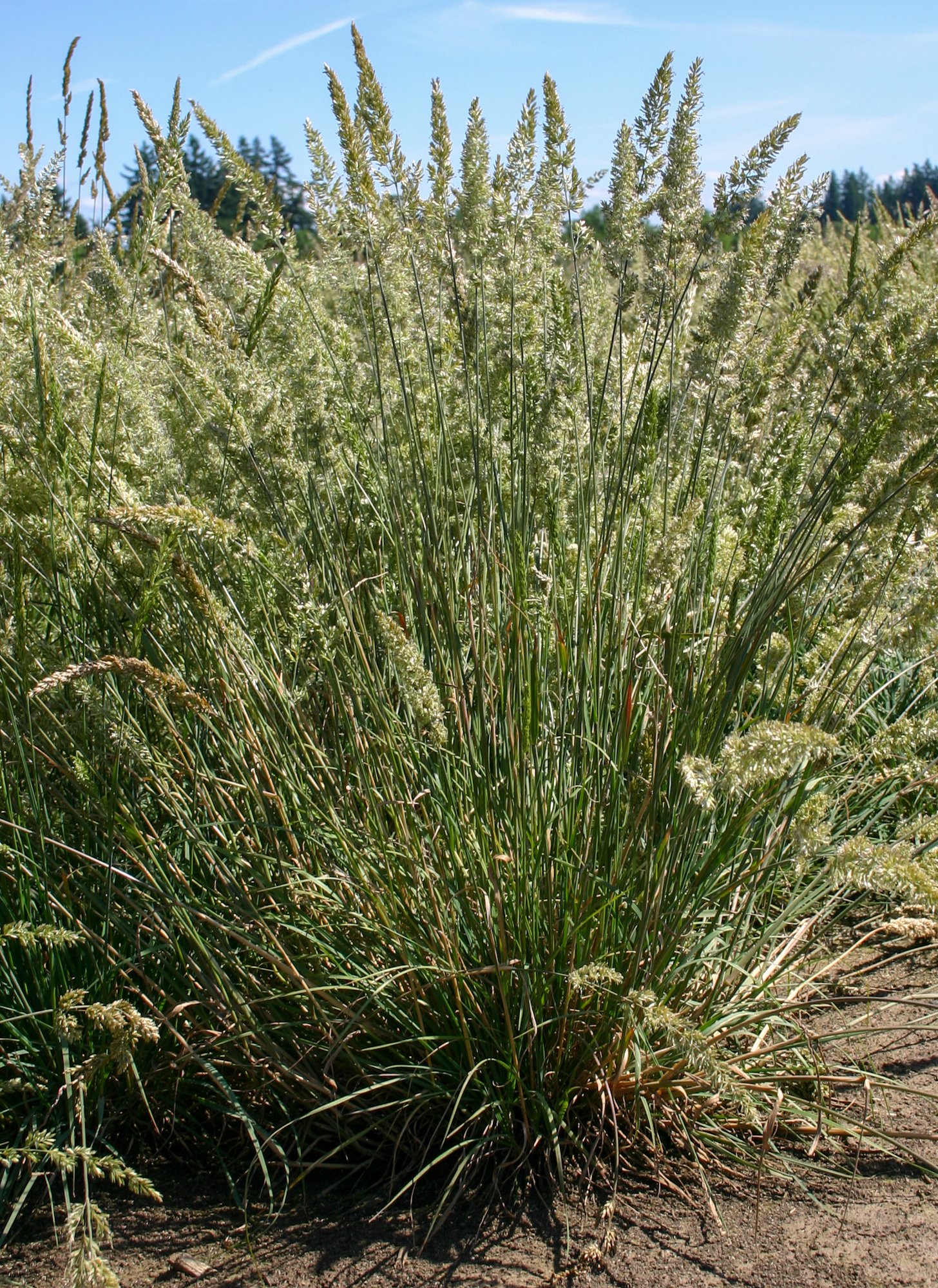 Image 4 of 5
Image 4 of 5

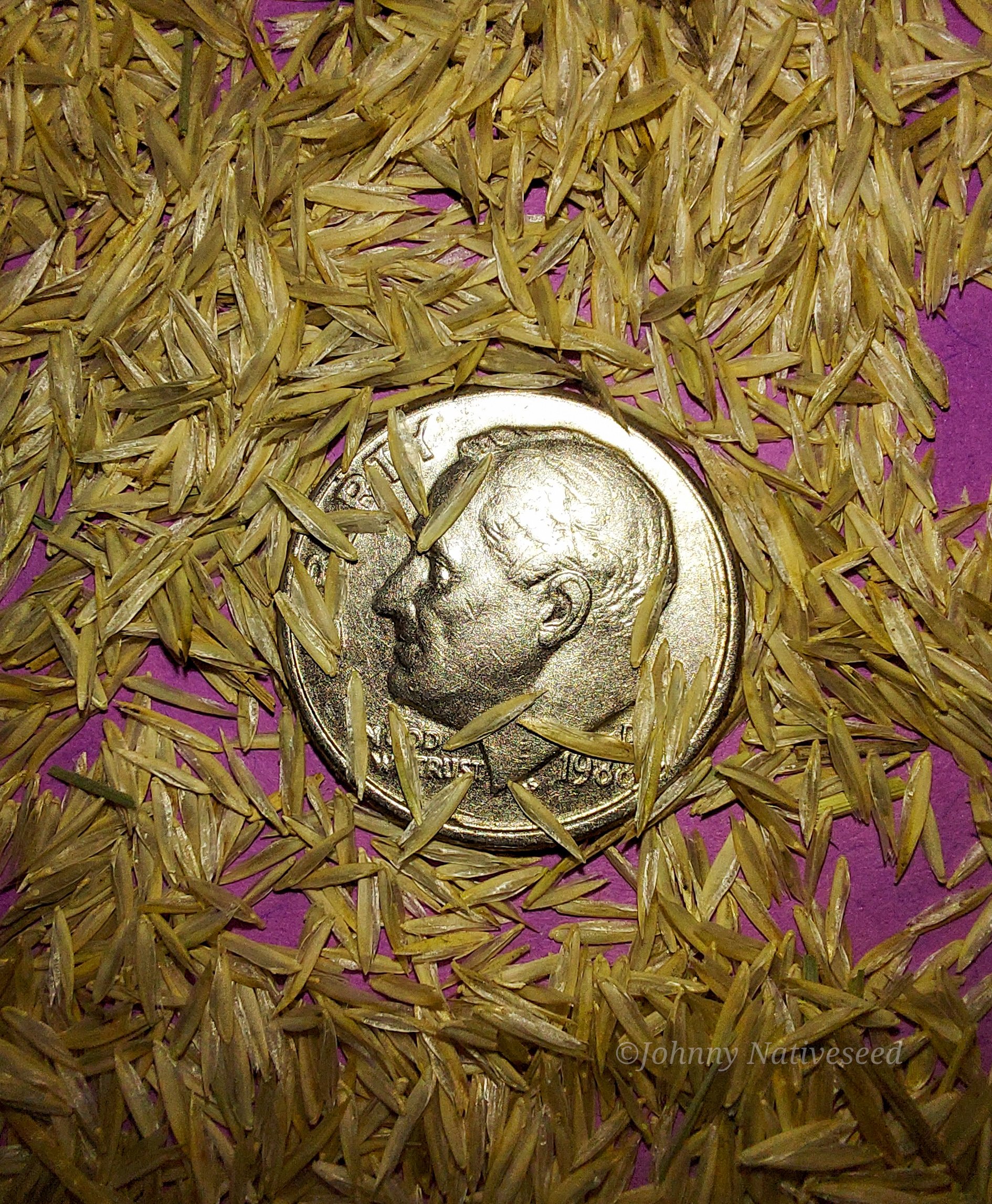 Image 5 of 5
Image 5 of 5






June Grass (Koeleria macrantha)
June Grass (Koeleria macrantha)
Koeleria macrantha is the scientific name for a species of grass known more commonly as June Grass, or Prairie Junegrass native to North America and as Crested Hair-grass in the UK. It is widespread across much of Eurasia and North America. It occurs in many habitat types, especially prairie.
June Grass is a short, tuft-forming perennial bunchgrass, reaching heights from 7 7⁄8 to 27 1⁄2 inches. The leaves are basal and up to about 7 7⁄8 in long, with a blue-green hue. The inflorescence is nearly cylindrical and may taper somewhat toward the tip. It holds shiny tan spikelets which are sometimes tinted with purple, each about half a centimeter long. Its fruit is a grain that breaks once it has fully ripened.
June Grass is a plant that prefers cooler seasons such as early spring or fall. It grows mostly in rocky or sandy, well-drained areas within forests or plains. It prefers more direct sunlight over partially shaded areas. It has the ability to grow in elevations as high as 8,136 feet and as low as 396 feet above sea level.
June Grass is used as an exceptionally low-maintenance lawn and turf grass. It is, however not suitable for high-traffic use due to its slow growth rate. It is often used for golf course roughs, and is excellent as an anchor plant for those who have the ability to plant grass/green roofs.
June Grass is one of many dietary staples for all classes of livestock and many species of various prairie wildlife depending on the stage of its seasonal development. It provides a stable source of nourishment for livestock in early spring and has been utilized by several species of deer, elk, and sheep for a food source due to its ability to grow in remote areas where the environment is not suited for other plant life.
Due to the fact that it grows in scattered areas, it has not become a large dietary staple for much wildlife but still provides moderate nourishment to prairie wildlife. It has been found to be palatable to all livestock and wildlife in its post-curing stage in spring and fall but the palatability drops for most species when seed production begins before curing.
Koeleria macrantha has been implemented in several areas of frequent wildfires due to its fire-resistant qualities. Due to its small size and the coarse leaves, they burn faster and transfer a very small amount of heat to the soil below. It also usually grows in small groups, which limits the amount of damage it can do once it burns. Although this species varies on its impact on fighting wildfires depending on the environment it grows in and the state of the plant, it provides a much needed damper for controlling the fire once it has begun.
The seed can be ground down into a powder then can be boiled in water, like a porridge, or made into flour for bread.
The leaves of the plant can be woven together to make brooms or brushes. Long stalks of the plant can be strung together with other plant fiber or string to be used for cleaning pots and pans. It has also been used as a building material when mixed with adobe for its adhesive qualities, fire resistance and overall strength.
This species is considered present but rare in several counties of the states of Ohio, Arkansas, and Louisiana.
Plant Details
USDA Zones: 3-9
Germination Needs: No special treatment needed, seed is small and requires light to germinate, do not bury seed deeper than it is wide. This seed prefers to germinate in cool soil.
Life Cycle: Perennial
Sun Exposure: Full Sun
Soil Moisture: Medium-Dry, Dry
Plant Spacing: 10 inches - 1 foot
Height: 2 feet
Bloom time: June, July
Advantages :
Bird Favorite: seeds, insects, fruit, nectar, nesting, perchs.
Deer Resistant: Yes
Excellent in the home landscape!
Native to : Wisconsin, Minnesota, Iowa, Illinois, Indiana, Ohio, Michigan, Missouri, Pennsylvania, New York, Vermont, Maine, Maryland, Kentucky, Mississippi, Alabama, Louisiana, Arkansas, North Dakota, South Dakota, Nebraska, Kansas, Oklahoma, Texas, New Mexico, Colorado, Wyoming, Montana, Idaho, Nevada, Utah, Arizona, California, Oregon, and Washington.
.
.
Packet quantities:
We pride ourselves on ethical, hands on, ecological management, using no mechanical or chemical methods whatsoever.
All of our native seed is hand reared, hand picked, and hand packed from native prairies under our exclusive management, never breaking chain of custody from the field until it is sent to you. Each packet is hand prepared for shipment by us, directly.
Small seed species will contain greater than 20-25 seed
Large seed species will contain greater than 10-15 seed
It is our mission to spread the wealth of native plant and pollinator ecological sustainability, and educate back yard gardeners as well as corporate and government entities in how to germinate, grow, and benefit from native synergies.
Thank you for your support, it is because of you, that we can grow together to do, what we do.🐛🦋🐝🐞🌾🌱🌼🧡
June Grass (Koeleria macrantha)
Koeleria macrantha is the scientific name for a species of grass known more commonly as June Grass, or Prairie Junegrass native to North America and as Crested Hair-grass in the UK. It is widespread across much of Eurasia and North America. It occurs in many habitat types, especially prairie.
June Grass is a short, tuft-forming perennial bunchgrass, reaching heights from 7 7⁄8 to 27 1⁄2 inches. The leaves are basal and up to about 7 7⁄8 in long, with a blue-green hue. The inflorescence is nearly cylindrical and may taper somewhat toward the tip. It holds shiny tan spikelets which are sometimes tinted with purple, each about half a centimeter long. Its fruit is a grain that breaks once it has fully ripened.
June Grass is a plant that prefers cooler seasons such as early spring or fall. It grows mostly in rocky or sandy, well-drained areas within forests or plains. It prefers more direct sunlight over partially shaded areas. It has the ability to grow in elevations as high as 8,136 feet and as low as 396 feet above sea level.
June Grass is used as an exceptionally low-maintenance lawn and turf grass. It is, however not suitable for high-traffic use due to its slow growth rate. It is often used for golf course roughs, and is excellent as an anchor plant for those who have the ability to plant grass/green roofs.
June Grass is one of many dietary staples for all classes of livestock and many species of various prairie wildlife depending on the stage of its seasonal development. It provides a stable source of nourishment for livestock in early spring and has been utilized by several species of deer, elk, and sheep for a food source due to its ability to grow in remote areas where the environment is not suited for other plant life.
Due to the fact that it grows in scattered areas, it has not become a large dietary staple for much wildlife but still provides moderate nourishment to prairie wildlife. It has been found to be palatable to all livestock and wildlife in its post-curing stage in spring and fall but the palatability drops for most species when seed production begins before curing.
Koeleria macrantha has been implemented in several areas of frequent wildfires due to its fire-resistant qualities. Due to its small size and the coarse leaves, they burn faster and transfer a very small amount of heat to the soil below. It also usually grows in small groups, which limits the amount of damage it can do once it burns. Although this species varies on its impact on fighting wildfires depending on the environment it grows in and the state of the plant, it provides a much needed damper for controlling the fire once it has begun.
The seed can be ground down into a powder then can be boiled in water, like a porridge, or made into flour for bread.
The leaves of the plant can be woven together to make brooms or brushes. Long stalks of the plant can be strung together with other plant fiber or string to be used for cleaning pots and pans. It has also been used as a building material when mixed with adobe for its adhesive qualities, fire resistance and overall strength.
This species is considered present but rare in several counties of the states of Ohio, Arkansas, and Louisiana.
Plant Details
USDA Zones: 3-9
Germination Needs: No special treatment needed, seed is small and requires light to germinate, do not bury seed deeper than it is wide. This seed prefers to germinate in cool soil.
Life Cycle: Perennial
Sun Exposure: Full Sun
Soil Moisture: Medium-Dry, Dry
Plant Spacing: 10 inches - 1 foot
Height: 2 feet
Bloom time: June, July
Advantages :
Bird Favorite: seeds, insects, fruit, nectar, nesting, perchs.
Deer Resistant: Yes
Excellent in the home landscape!
Native to : Wisconsin, Minnesota, Iowa, Illinois, Indiana, Ohio, Michigan, Missouri, Pennsylvania, New York, Vermont, Maine, Maryland, Kentucky, Mississippi, Alabama, Louisiana, Arkansas, North Dakota, South Dakota, Nebraska, Kansas, Oklahoma, Texas, New Mexico, Colorado, Wyoming, Montana, Idaho, Nevada, Utah, Arizona, California, Oregon, and Washington.
.
.
Packet quantities:
We pride ourselves on ethical, hands on, ecological management, using no mechanical or chemical methods whatsoever.
All of our native seed is hand reared, hand picked, and hand packed from native prairies under our exclusive management, never breaking chain of custody from the field until it is sent to you. Each packet is hand prepared for shipment by us, directly.
Small seed species will contain greater than 20-25 seed
Large seed species will contain greater than 10-15 seed
It is our mission to spread the wealth of native plant and pollinator ecological sustainability, and educate back yard gardeners as well as corporate and government entities in how to germinate, grow, and benefit from native synergies.
Thank you for your support, it is because of you, that we can grow together to do, what we do.🐛🦋🐝🐞🌾🌱🌼🧡
